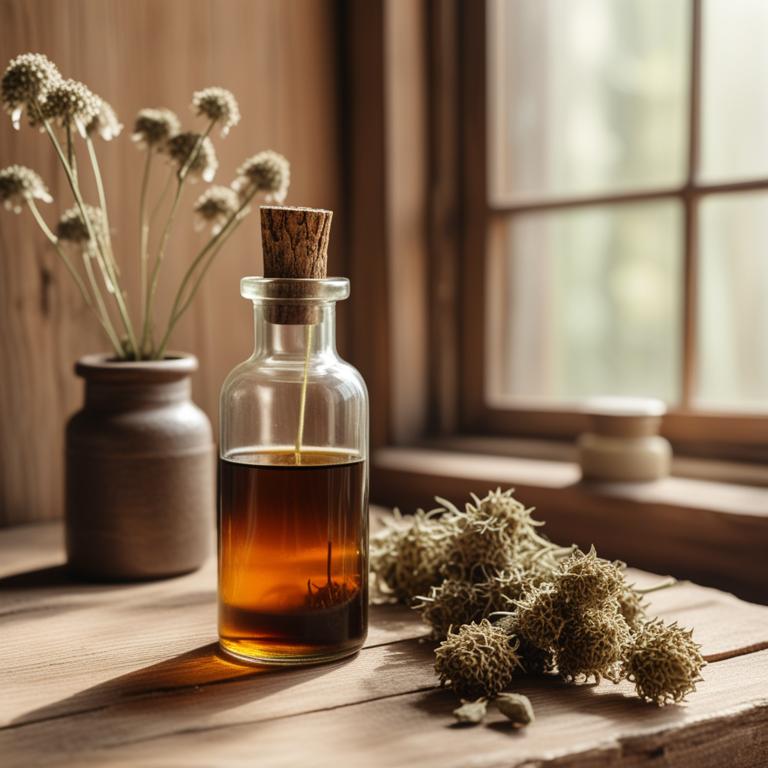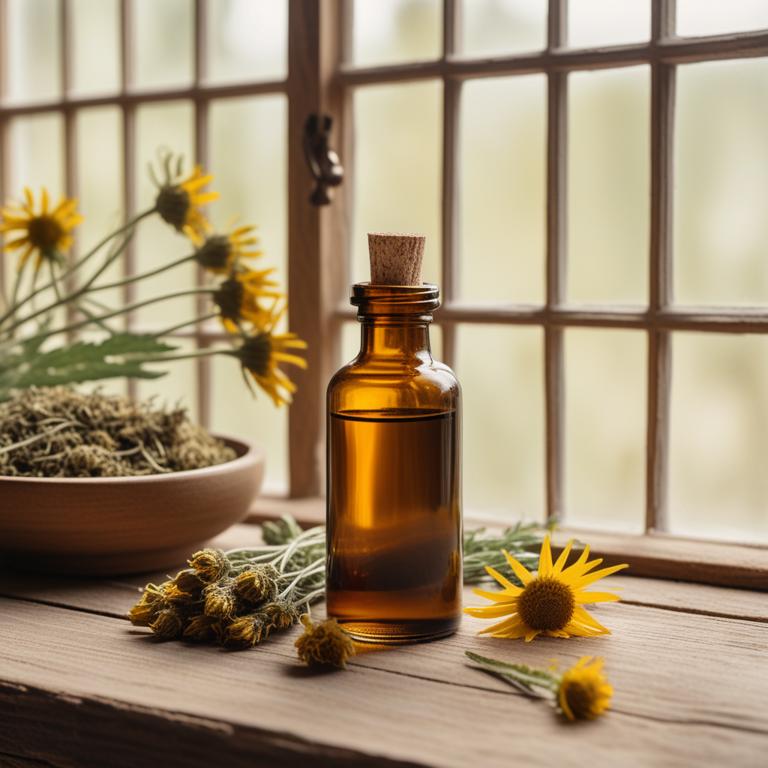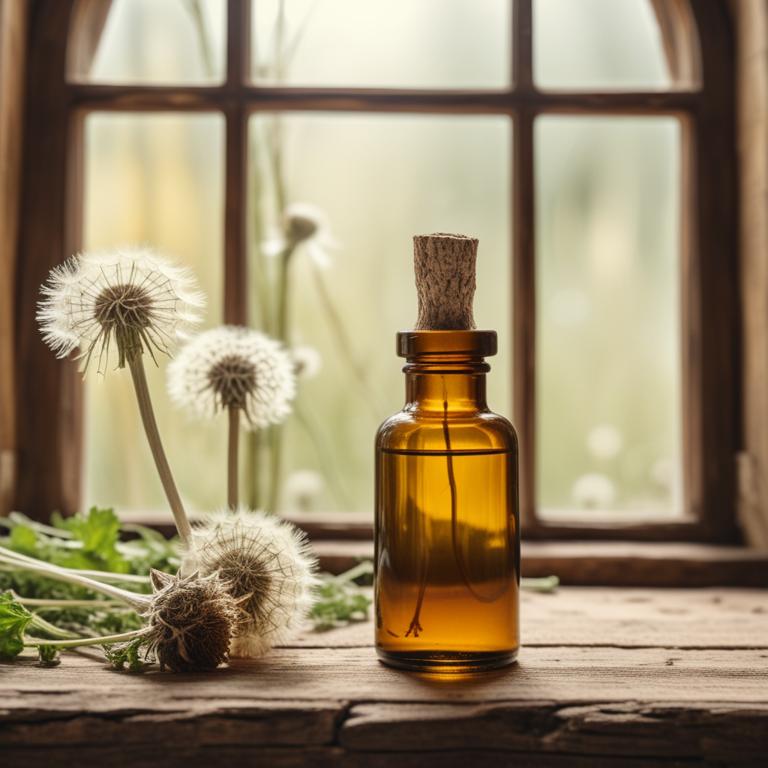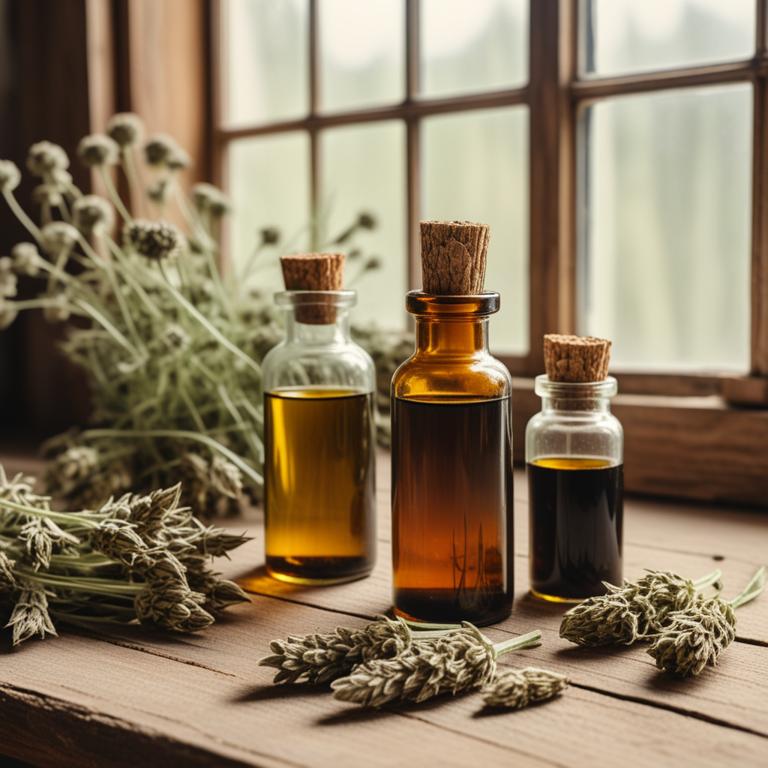7 Best Herbal Tinctures For Sunburn

Herbal tinctures for sunburn are liquid extracts made from plants, herbs, and flowers that have anti-inflammatory, antioxidant, and soothing properties to help alleviate the discomfort and pain caused by sunburn.
Some of the benefits of using herbal tinctures to treat sunburn include reducing redness, promoting skin healing, and providing relief from itching and stinging sensations.
Examples of herbal tinctures that can be used to treat sunburn include aloe vera tincture, which helps to soothe and moisturize the skin; chamomile tincture, which calms and reduces inflammation; calendula tincture, which promotes skin healing and regeneration; and lavender tincture, which has anti-inflammatory and antibacterial properties to prevent infection.
Additionally, herbal tinctures like tea tree oil, witch hazel, and peppermint can also be used to treat sunburn, as they have cooling and anti-inflammatory effects that can help to reduce the discomfort and promote skin recovery.
According to "Expert opinion on therapeutic patents", tinctures for sunburn may be formulated with botanical antioxidants found in medicinal plants, which have shown photoprotective properties that can help reduce the incidence of sunburn and photoaging.
Below there's a list of the 7 best herbal tinctures for sunburn.
- 1. Aloe barbadensis tinctures
- 2. Calendula officinalis tinctures
- 3. Arnica montana tinctures
- 4. Hypericum perforatum tinctures
- 5. Hibiscus sabdariffa tinctures
- 6. Taraxacum officinale tinctures
- 7. Plantago major tinctures
Also you may be interested in...
TODAY'S FREE BOUNDLE
Herb Drying Checklist + Herbal Tea Shopping List + Medicinal Herbs Flashcards
Enter you best email address below to receive this bundle (3 product valued $19.95) for FREE + exclusive access to The Aphotecary Letter.
$19.95 -> $0.00
1. Aloe barbadensis tinctures

Aloe barbadensis tinctures have been traditionally used to treat sunburn, utilizing their anti-inflammatory and soothing properties to provide relief from redness and discomfort.
This herbal preparation helps to treat sunburn by reducing inflammation, promoting wound healing, and hydrating the skin, ultimately providing a cooling and calming effect.
The bioactive constituents of Aloe barbadensis, including aloin, aloe-emodin, and vitamins A, C, and E, contribute to its therapeutic properties and aid in the healing process.
The benefits of using Aloe barbadensis tinctures to treat sunburn include rapid relief from pain and discomfort, reduced risk of infection, and improved skin health.
Related Study
According to the study, Aloe barbadensis tinctures for sunburn may potentially benefit treatment due to its antibacterial activity, safety, and cost-effectiveness.
2. Calendula officinalis tinctures

Calendula officinalis tinctures are a popular herbal remedy used to treat sunburn, utilizing their anti-inflammatory and antiseptic properties to soothe and protect the skin.
The tinctures help to treat sunburn by reducing redness, swelling, and pain, while promoting wound healing and preventing infection.
The bioactive constituents of Calendula officinalis, including flavonoids, triterpenoids, and carotenoids, contribute to its therapeutic effects, providing antioxidant and anti-inflammatory activity that aids in skin repair.
The benefits of using Calendula officinalis tinctures to treat sunburn include reduced risk of infection, accelerated healing, and a decrease in the discomfort associated with sunburned skin.
Related Study
According to "Anti-cancer agents in medicinal chemistry", Calendula officinalis tinctures for sunburn may offer benefits due to their antioxidant, anti-inflammatory, and wound healing properties, which can help protect the skin from damage caused by ionizing radiation and reduce symptoms of sunburn, such as redness, itching, and pain.
3. Arnica montana tinctures

Arnica montana tinctures have been used traditionally to treat sunburn, utilizing their anti-inflammatory and antioxidant properties to soothe and calm the skin.
The tincture helps to treat sunburn by reducing redness, swelling, and pain, while also promoting the healing of damaged skin cells.
The bioactive constituents of Arnica montana, including flavonoids, sesquiterpenes, and triterpenoids, contribute to its therapeutic effects by inhibiting the production of pro-inflammatory enzymes and scavenging free radicals that exacerbate sunburn.
The benefits of using Arnica montana tinctures to treat sunburn include reduced discomfort, faster healing times, and a lower risk of complications such as blistering or infection.
4. Hypericum perforatum tinctures

Hypericum perforatum tinctures, also known as St. John's Wort, have been traditionally used to treat sunburn due to its anti-inflammatory and antiseptic properties.
The bioactive constituents present in this herbal preparation, such as hyperforin and hypericin, help to reduce redness, itching, and pain associated with sunburn by inhibiting the production of pro-inflammatory mediators.
The flavonoids and phenolic acids in Hypericum perforatum tinctures also exhibit antioxidant and photoprotective effects, which help to protect the skin from further damage and promote wound healing.
By using Hypericum perforatum tinctures, individuals can experience relief from sunburn symptoms and promote the overall health and well-being of their skin.
Related Study
According to "Journal of ethnopharmacology", Hypericum perforatum tinctures for sunburn have shown beneficial effects in laboratory studies and clinical trials, indicating potential therapeutic properties in wound healing and possibly sunburn relief.
5. Hibiscus sabdariffa tinctures

Hibiscus sabdariffa tinctures have been traditionally used to treat sunburn, a condition characterized by redness, pain, and inflammation of the skin due to excessive exposure to the sun.
The astringent and anti-inflammatory properties of this herbal preparation help to soothe and calm the skin, reducing discomfort and promoting faster healing.
The bioactive constituents of hibiscus sabdariffa, including anthocyanins, flavonoids, and phenolic acids, have been shown to exhibit antioxidant and anti-inflammatory activities that contribute to its beneficial effects on sunburn.
The benefits of using hibiscus sabdariffa tinctures to treat sunburn include reduced redness, pain relief, and accelerated healing, making it a popular natural remedy for this common summer affliction.
6. Taraxacum officinale tinctures

Taraxacum officinale tinctures have been used to treat sunburn due to their anti-inflammatory and soothing properties.
These tinctures help to reduce redness, swelling, and discomfort associated with sunburn by promoting skin healing and reducing pain.
The bioactive constituents present in Taraxacum officinale, such as flavonoids and phenolic acids, contribute to its therapeutic effects by exhibiting antioxidant and anti-inflammatory activities.
Regular use of Taraxacum officinale tinctures may help to alleviate sunburn symptoms, promoting faster recovery and preventing further damage to the skin.
7. Plantago major tinctures

Plantago major tinctures have been traditionally used to treat sunburn due to their anti-inflammatory and soothing properties.
The herbal preparation helps to treat sunburn by reducing redness, swelling, and discomfort associated with the condition, promoting a faster healing process.
The bioactive constituents of Plantago major, including aucubin, plantamajoside, and isobutyl amide, play a crucial role in its therapeutic effects by exhibiting antioxidant, anti-inflammatory, and protective properties against UV radiation damage.
The benefits of using Plantago major tinctures to treat sunburn include reduced pain, accelerated wound healing, and prevention of further damage to the skin.